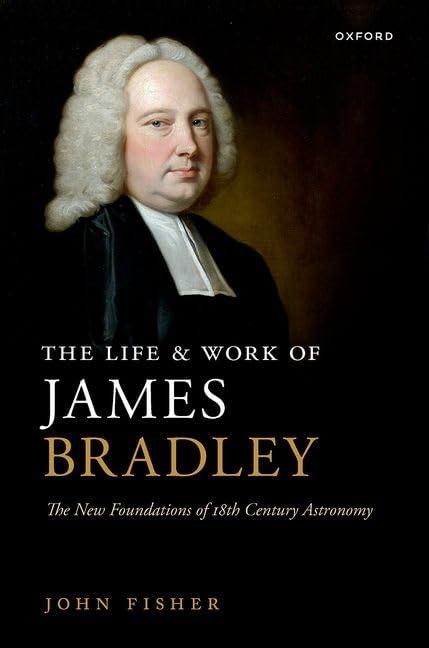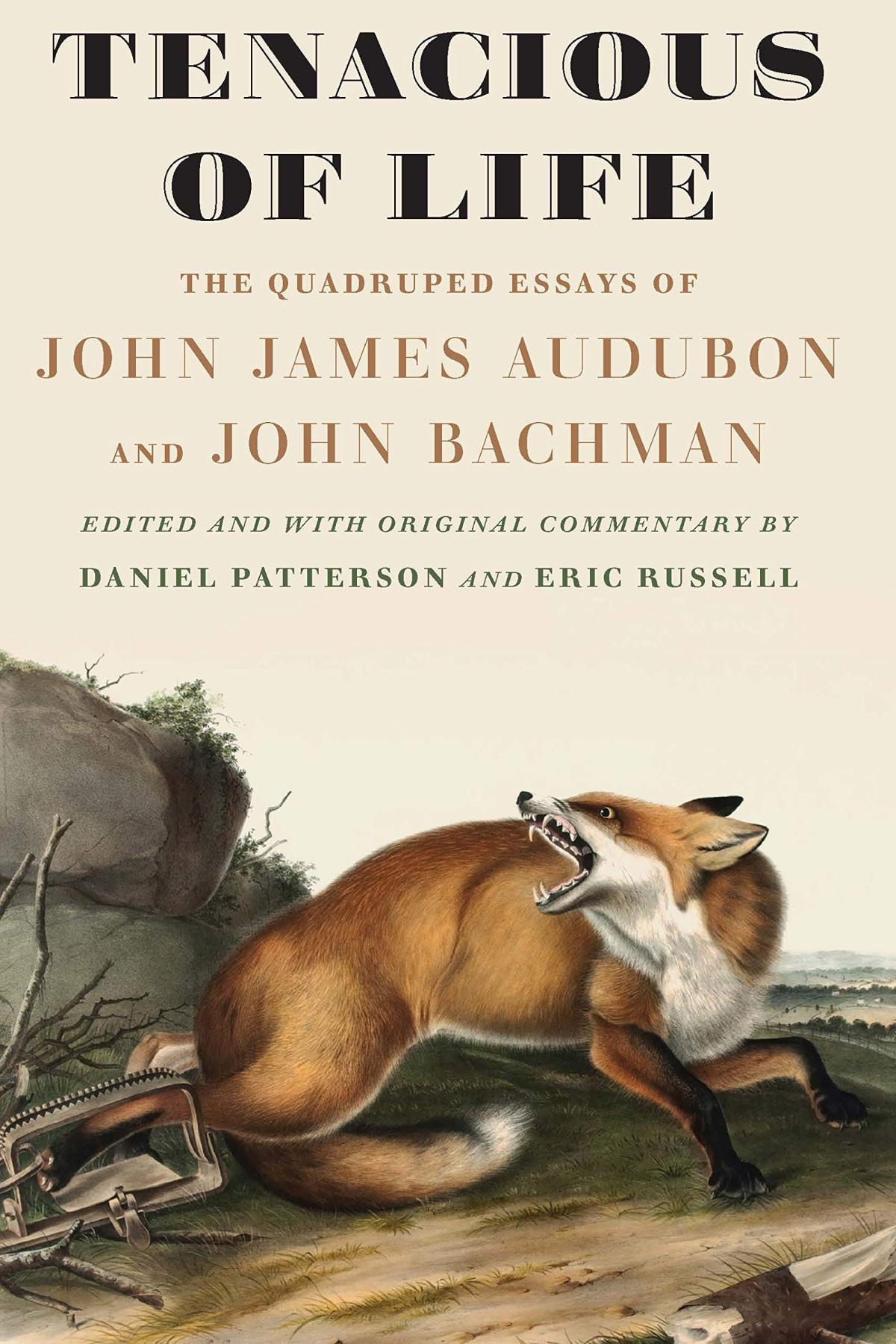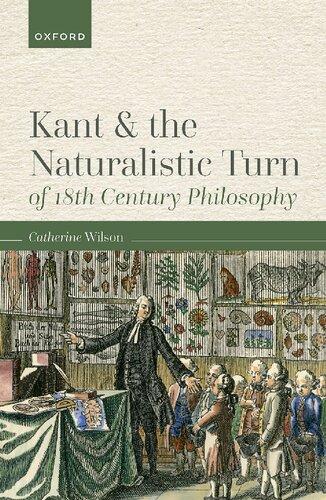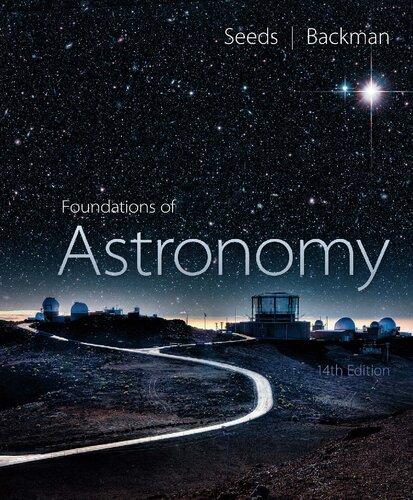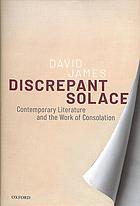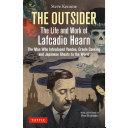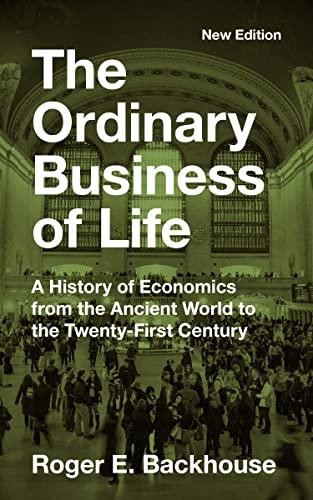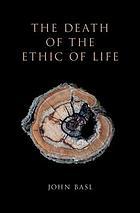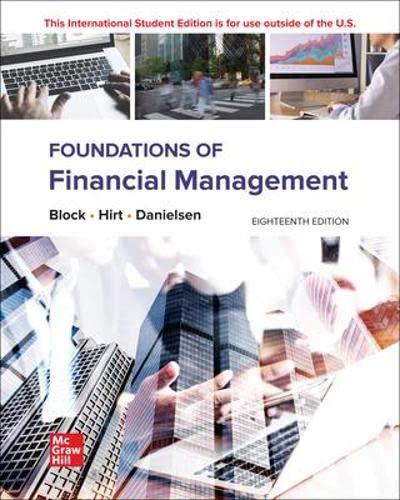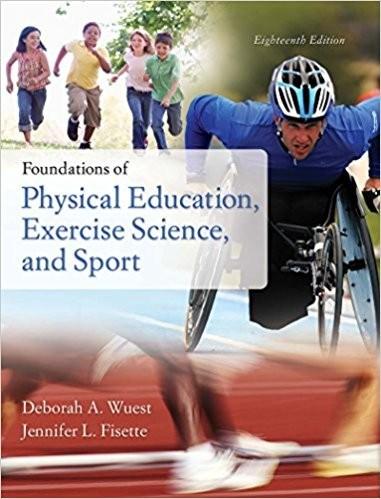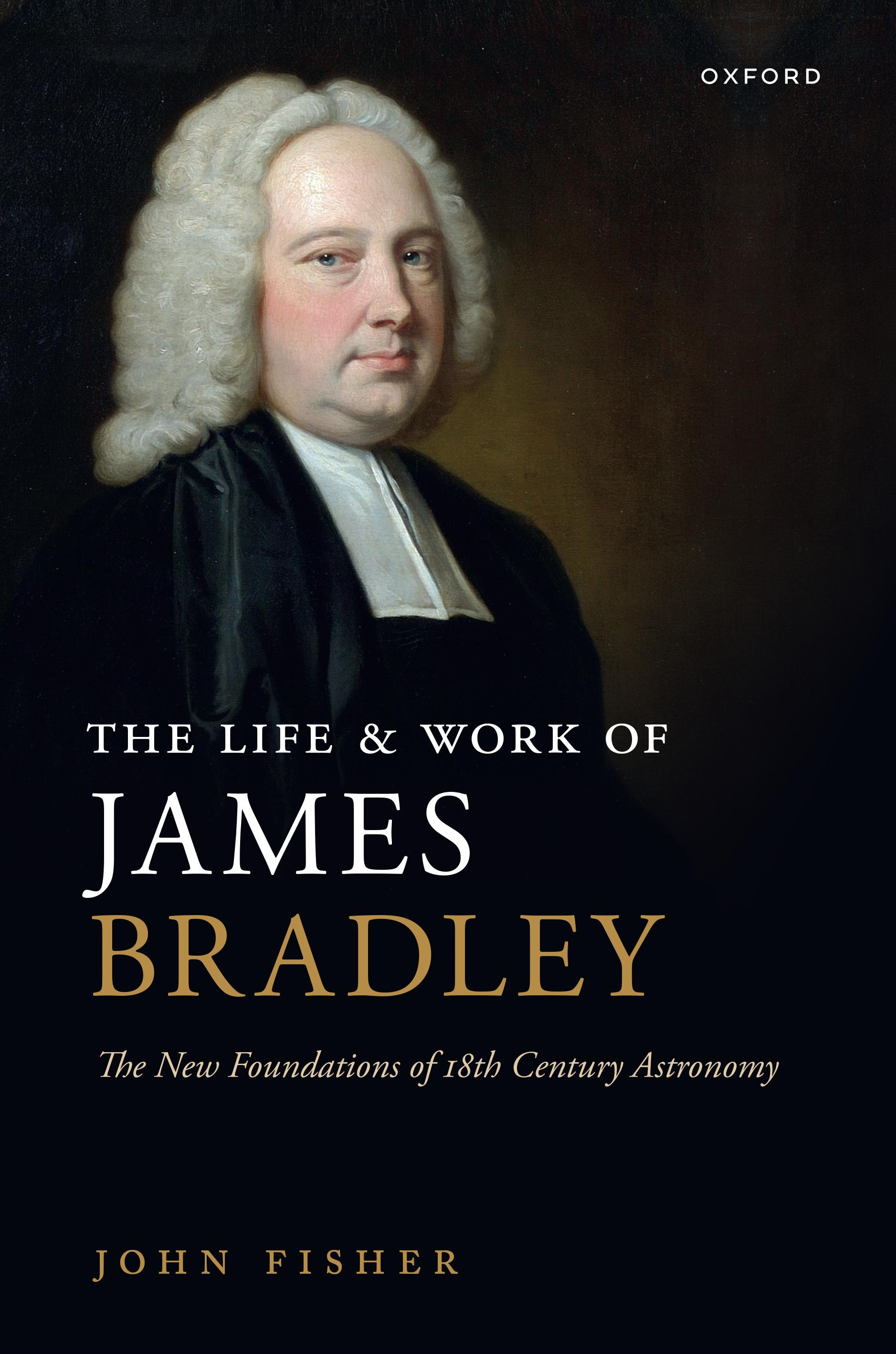and Work
Visit to download the full and correct content document: https://ebookmass.com/product/the-life-and-work-of-james-bradley-the-new-foundatio ns-of-18th-century-astronomy-john-fisher/
More products digital (pdf, epub, mobi) instant download maybe you interests ...
Tenacious of Life : The Quadruped Essays of John James Audubon and John Bachman John James Audubon
https://ebookmass.com/product/tenacious-of-life-the-quadrupedessays-of-john-james-audubon-and-john-bachman-john-james-audubon/
Kant and the Naturalistic Turn of 18th Century Philosophy Catherine Wilson
https://ebookmass.com/product/kant-and-the-naturalistic-turnof-18th-century-philosophy-catherine-wilson/
Foundations of Astronomy Fourteenth Edition Michael A.
Seeds
https://ebookmass.com/product/foundations-of-astronomyfourteenth-edition-michael-a-seeds/
Discrepant solace. Contemporary literature and the work of consolation. James
https://ebookmass.com/product/discrepant-solace-contemporaryliterature-and-the-work-of-consolation-james/
The Outsider: the Life and Work of Lafcadio Hearn Steve Kemme
https://ebookmass.com/product/the-outsider-the-life-and-work-oflafcadio-hearn-steve-kemme/
The Ordinary Business of Life: A History of Economics from the Ancient World to the Twenty-First CenturyNew Edition Backhouse
https://ebookmass.com/product/the-ordinary-business-of-life-ahistory-of-economics-from-the-ancient-world-to-the-twenty-firstcentury-new-edition-backhouse/
The Death Of The Ethic Of Life John Basl
https://ebookmass.com/product/the-death-of-the-ethic-of-lifejohn-basl/
Foundations of Financial Management, 18e ISE 18th Edition Stanley B. Block
https://ebookmass.com/product/foundations-of-financialmanagement-18e-ise-18th-edition-stanley-b-block/
(eTextbook PDF) for Foundations of Physical Education, Exercise Science, and Sport 18th Edition
https://ebookmass.com/product/etextbook-pdf-for-foundations-ofphysical-education-exercise-science-and-sport-18th-edition/
The Life and Work of James Bradley: The New Foundations of 18th Century Astronomy is the first major work on the life and achievements of James Bradley for 190 years.
This book offers a new perspective and new interpretations of previously published materials, together with various insights about recently researched sources.
This book is a complete account of the life and work of Bradley as discerned from surviving documents of his working archive, as well as other documents and records.
In addition, it offers a new interpretation of Bradley's work as an astronomer, not merely from his observations of Jupiter and Saturn and their satellites and annual aberration and the nutation of the Earth's axis, but also his corroborative work with pendulums and other horological work with George Graham.
It also explores the little amount documented about his private life including a degree of speculation about his personal relationships.
This work on 18th century astronomy is intended for students of the history of science, astronomy and 18th century English society, and for scholars seeking new lines of inquiry.
It contains an extensive bibliography and a detailed chronology, both of which offer support for further reading and research.
Meliusseroquamnumquam. (Betterlatethannever.)
Foreword
Ifaskedaboutfamouseighteenth-centuryastronomers,mostmembersofthe BritishgeneralpublicwouldbeabletoidentifyEdmondHalley,thesecond AstronomerRoyal,whoin1705showedthattheeponymouscometof1682 hadreturnedatroughlyseventy-six-yearintervalsandwouldcontinuetodo so.ManywouldmentionIsaacNewton,inventorofthefirstworkingreflectingtelescopeandauthorofthe1687 PrincipiaMathematica,whosecontents pavedthewayforthedramaticflourishingofastronomyinthefollowing decades.Attheotherendoftheeighteenthcentury,thescientificachievementsoftheone-timemusicianWilliamHerschelremainastonishing;among otherintellectualfeatshediscoveredUranusin1781(andlatertwoofits moons,aswellastwoofSaturn’s),identifiedthousandsofnebulae,anddiscoveredinfraredradiationwhilepioneeringthemeasurementofstellarspectra. SomemighthaveheardofNevilMaskelyne,thefifthAstronomerRoyal,but onlybecauseheisratherunfairlycastastheanti-herotothegreathorologist JohnHarrisoninDavaSobel’s1995book Longitude.Stillotherswillknowthe namesofCharlesMasonandJeremiahDixon,whosesurveyingandastronomicalworkinNorthAmericafrom1763to1767wasthebasisforwhatcametobe calledtheMason–Dixonline,theboundarybetweenthenorthern‘free’states andthesouthernslave-owningstatesfollowingtheMissouriCompromiseof 1820.
AsJohnFishershowsinhisexcellentbook,itisextraordinarythat thenameandaccomplishmentsofJamesBradley(1692–1762),thethird AstronomerRoyal,arenotbetterknown.Bradleywastheoutstandingpositionalastronomerofhistimeandwasrecognizedassuchformanydecades afterhisdeath.Hisreputationwassealedbythepublicationofhispaperon a‘newdiscoveredmotionofthefixedstars’atthestartof1729;asidefrom providingoverwhelmingevidenceinfavouroftheCopernicansystem,the discoveryoftheapparentannualmotionofstars(whichhelatertermed‘aberration’)alsoprovidedthebasisforproducinganaccuratecalculationofthe speedoflight.Inthe1730s,Bradley’sexpertisewascrucialincorroboratingthe pro-Newtonianfindingsofvariousscientificexpeditionsregardingtheoblate spheroidalshapeoftheearth.However,hisreputationfortheunrivalledexactitudeofhisworkwassealedbyhisannouncementin1748oftheexistenceof
‘nutation’,aoscillationinthecyclical‘wobble’oftheearththatgivesriseto theprecessionoftheequinoxes.In1818,FriedrichBesselpublished FundamentaAstronomiae,hisgreatworkthatreducedthepositionsof3,222stars (toa1755base)fromdataproducedbyBradleyandhisassistantsatGreenwichbetween1750and1762.InthetitleofBessel’swork,Bradleywashailed as‘thatincomparableman’.
BorninSherborne,Gloucestershire,BradleyattendedtheGrammarSchool atNorthleachandwentuptoBalliolCollegeOxfordin1711.Twoyearsafter theawardofanMAin1717,hebecamevicarofBridstow,butbythenhe hadalreadyfalleninlovewithastronomy,andhistenureasaclericwasshort lived.Bradley’sfirstastronomicalobservationsweremadein1712,andfrom 1715heworkedcloselywithhismaternaluncle,theastronomerJamesPound, atPound’sobservatoryinWansteadinEssex.HisprecocioustalentwasrecognizedbyhiselectionasaFellowoftheRoyalSocietyin1718,andinthe followingyearsheengagedinanintensestudyofthesatellitesofJupiter,passingonhisobservationstoHalleyforuseaspartofhiseffortstofindamethod thatwouldallowthedeterminationoflongitudeatsea.
TwoinanimateobjectsstandoutasconstantcompanionsinBradley’s endeavours,withoutwhichhisdiscoverieswouldhavebeenimpossible.The firstwastheorangegiant ɣDraconis (Eltanin),thestarchosenbyRobert Hookeinthelate1660sinhisattempttoprovethemotionoftheEarthby determiningitsannualparallax.Assumingthatstarswerecloseenoughtothe Earthforparallaxtobedetected,thetruthoftheCopernicansystemmightbe shownbyashiftofpositionofastaragainstthebackgroundofotherstarswhen observationsweretakenatdiametricallyopposedpositionsintheEarth’sorbit (i.e.sixmonthsapart). ɣDraconis wasthestarofchoiceforLondon-based astronomersbecauseitwasasecond-magnitudestarthatpassedveryclose tothezenith.Sincetheobservationofsuchstarswereleastaffectedbyatmosphericrefraction,theirmovementscouldbetrackedmoreaccuratelythan others.ɣDraconis wouldbethemostimportantcelestialobjectforBradleyin theprogrammeofobservationsthatunderpinnedhisaccountsofaberration andnutation.
Thesecondwasthe12.5footzenithtelescopeorsectormadeforBradleyby thegreatinstrument-makerGeorgeGraham.Thesectorenabledastronomers tomakehighlyaccuratemeasurementofstarspassingnearthezenith,and SamuelMolyneux,acloseassociateofPoundandsecretarytothePrince ofWales(GeorgeIIfrom1727),hadcommissioneda24.5footsectorfrom Grahamin1725toexaminethemotionof ɣDraconis athishomeatKew. Bradley’ssmallerinstrument,whichwassetupatElizabethPound’shousein
August1727,hadamuchgreaterfreedomofmovementeithersideofthe zeniththanthesectoratKew(morethan6∘ eachway),allowingmanymore starstobetakenintoaccount.
ThesupportofHalleyandPoundledtoBradley’selectionasSavilian ProfessorofAstronomyatOxfordin1721,buthespentmostofhistimeduringthe1720satWansteadandKew. ɣDraconis wasthefocusofMolyneux andPound’sworkatKewintheearly1720s,whichwasdesignedinpartto testHooke’sclaimsaboutstellarparallax.FollowingthedeathofPoundin 1724,BradleycontinuedtoworkontheprojectwithMolyneuxandGraham atKew,andhedetectedanomaloussouthwardsmovementsof ɣDraconis almostimmediatelyfollowingtheinstallationofthesectorinNovember1725. MolyneuxinitiallybelievedthattheyconfirmedHooke’sconclusionsabout stellarparallax,whichimpliedthatɣDraconisandotherstarsweremuchcloser tothesolarsystemthanNewtonhadallowedinhistheoryoftheheavens.As MolyneuxratherunwiselytoldNewtonhimself,thefindingssuggestedthat theuniversewasmuchmoredenselycrowdedwithstarsandmoreunstablethanNewtonhadclaimedinthe Principia.AlthoughNewtonapparently toldMolyneuxthattherewasnoargumentagainstempiricalevidence,hehad showntohissatisfactioninthe Principia thatthecloseststarstothesolar systemweretoofarawayforanyparallaxtobeobserved.
AsFisherpointsout,asubstantialpartofBradley’sgreatgiftsasan astronomerwasthefactthathewascomfortableworkingtoalevelofprecisionofonearcsecondorevenless,whenmanycontemporariessuchasHalley dismissedsuchprecisionasirrelevantorimpossibletoachieve.Inthecaseof ɣDraconis,Bradleydetected‘entirelyunexpected’changesinitspositionof onearcsecondeverythreedays,andhavingrejectedMolyneux’sideathatthis movementwasevidenceofstellarparallax,heconsideredthatitmightbedue tonutation.However,bycomparingitwithanotherstar(35Camelopardalis), herejectedthisandotherhypotheses,convincedneverthelessthatthemotions ofthetwostarsconformedtosomeregularpattern.Itwasasaresultofthis thathedecidedtocommissionthesecondinstrumentfromGrahamforuse atWanstead.Overtwodecades,Bradleyperformedpainstakingobservations thatcombinedacommitmenttoprecisionwithaconcernthathisinstruments shouldbecapableofprovidingthemostaccuratedatapossible.AsFisher showswithgreatclarity,theannualapparentmotionofthegenerallawofaberrationemergedasaresultofdetailedobservationsofanumberofstars,and onlylaterdidBradleyconcocthisexplanationforit.
Bradley’sothergreatdiscovery,thatofnutation,stemmedfromhisinitialobservationsof ɣDraconis atKew,butultimatelywasdeterminedbya
researchprogrammeatWansteadthatlastedovertwodecades.Earlyonhe hadrejectednutationasanexplanationofthe‘unexpected’movementof ɣ Draconis andotherstars,buthisattentiontodetailmadehimawarethat aberrationdidnotexplainalloftheanomalousmotionshewitnessed.In thiscase,starshadchangedtheirdeclinationsafewarcseconds less thanthe 50.4arcsecondsofannualmovementcausedbytheprecessionofequinoxes. Again,Bradleycheckedtoseeifhisinstrumentwasresponsiblefordeviations fromexpectedvaluesbuthavingfoundthatitwasnot,hesetouttoascertain whetherthesenewmotionsconformedtoaperiodiclaw.Fisher’sfineaccount ofthisresearchshowsthatBradley’sbeliefthattheanomalousmotionswere duetoalunar-influencednutationhadhardenedbytheearly1730s,andhe wasnowconvincedthatthenutationwaslinkedtotheperiodofrevolution ofthemotionsofthenodesofthelunarorbit(lunarnodesarethosepoints wheretheorbitingmooncrossestheplaneoftheearth’sequator).Thisbeing 18.6years,Bradleydecidedtoperformobservationsforslightlylongerthan this,inordertodemonstratethatthephenomenonconformedtoageneral law.Heannouncedthe‘discovery’ofnutationinaletteraddressedtotheEarl ofMacclesfieldandreadtotheRoyalSocietyinJanuary1748.Hewasawarded theCopleyMedal,theSociety’shighestaward,afewmonthslater.
Bradley’sresearchesintothephenomenaofaberrationandnutationought tobebetterknowninthehistoryofscience,sincetheyexemplifytheclose entanglementsbetweenstate-of-the-artobservationandthedevelopmentof astronomicaltheory.Althoughoneofhisdiscoveriesconcernedan‘apparent’motionofthestars,andtheothera‘real’motionoftheearth,Bradley showedthattheycouldbothbesubsumedundergenerallaws.Eachofthese findingsprovidedvaluableinformationabouttherealworld,confirmedNewtoniantheory,andcouldbeusedtocorrectobservations.The‘discoveries’ werethusnotmomentary‘aha’momentsthatoccurredtoapreparedmind, buttheresultsoffastidiouslyperformedobservationalprogrammesdesigned toproveahunchthatovertimebecameaconviction.
Inthe1730s,BradleywasoneofthemosteminentmembersoftheRoyal Society.Intheearly1730s,hepersuadedGrahamtosupplyazenithsector totheimpendingFrenchexpeditiontoLapland,whichwastomeasurethe lengthofadegreeinasnortherlyalatitudeaswaspossible.Theventure,led bytheFrenchnaturalphilosopherPierre-LouisMoreaudeMaupertuis,was designedtotestthevalidityofNewton’sdemonstrationthattheearthwas anoblatespheroid,incontrastwiththegenerallyheldFrenchviewthatit wasaprolatespheroid.Immediatelyfollowingtheconclusionoftheexpeditionin1737,MaupertuisaskedforBradley’shelpinapplyinghistheoryof
aberrationtocorrecttheobservationaldatacollectedfromtheFrenchexpeditiontoLapland.BradleywasdelightedthattheLaplanddataconfirmed Newton’saccountbutdisappointedthattheFrenchteamhadnotreversed thesectortotestitsaccuracyinextremeconditions.Herehedemonstrated hischaracteristicconcernwiththereliabilityofinstrumentationandwiththe needtoremoveeverypossibleerrorfromitsuse.OnceinstalledasAstronomer Royalinthefollowingdecade,hewouldinsistthateveryobservationtakenby himselforhisassistantswouldbeaccompaniedbybarometricandthermometricdata,accompaniedbycorrectionsforaberrationandnutation,andit wasthisinformationthatwouldbeusedtosuchgoodeffectbyBessel.
Bytheendofthe1730s,itwasclearthattheoctogenarianHalleywasailing,andthathewasnolongerabletoperformthedutiesofAstronomerRoyal atGreenwich.BradleywastheobvioussuccessorwhenHalleydiedin1742 and,havinggainedsubstantialexperiencefromstockingtheEarlofMacclesfield’sexcellentobservatoryatShirburneCastle,hewasinaprimeposition toassessthestateoftheequipmentandbuildingsatGreenwich.HeimmediatelysetouttorepairoldinstrumentsandstocktheObservatorywithnew ones,orderingitemsfromcraftsmen,suchastheclockmakerJohnShelton,the telescope-makerJamesShort,andJohnBird,whomadeanewtransitinstrumentfortheObservatoryin1750.Bradleypaidfortheseitemswithagrantof £1,000thatthekingallowedhimin1749,andatthesametimehedesigned the‘NewObservatory’thatwaserectedin1749/50.For£300Birdbuiltanew brassmuralquadranttoreplacetheironversionthathaddamagedthesupportingwallandwasnowuseless,whileBradleyprocured£45fromthetotal inordertobringtheWansteadsectortotheObservatory.Oneofthemostsignificantinstrumentseverdeployedinthehistoryofscience,itnowsitsonthe westwalloftheTransitRoomattheOldRoyalGreenwichObservatory.
BeyondGreenwichandWanstead,Bradleyspentatleastthreemonthsevery yearatOxford,where–inadditiontohispositionasSavilianChair–he hadbeenappointedlecturerinexperimentalphilosophyin1729.Hegave threecoursesoftwentylectureseachyearuntil1749,andthentwoperyear until1760.Thelecturesofferedtheoreticalandpracticaldemonstrationsof thedoctrinesfoundinNewton’s Principia and Opticks,thoughtherewaslittle astronomyinthem.Becausemorethanfortypercentofstudentsinanyyear signeduptohearhim,Bradleymadeatidysumfromtheselectures(c.£400 p.a.)whichsupplementedhissalaryasSavilianProfessor(£150p.a.)andthe pensionof£250p.a.hewasawardedbyGeorgeIIafter1752.Asurvivingstudentnotebookfromacoursegivenin1754showsthatBradleycloselyfollowed Newtonandhispublicdefendersinappealingtotheauthorityofrigorously
conductedobservationsandexperiments,andininveighingagainsthypothesesandsystems.Althoughhundredsofstudentsattendedthecourseoverthree decades,thecontentofBradley’slectureswasheldbyanumberofreactionary scholarstobeinimicaltotruereligion.
ConcerningBradleytheprivateman,thereremainsaconspicuouslackof directevidence.In1832,StephenRigaud,SavilianProfessorofAstronomy andeditorofBradley’s WorksandCorrespondence,appendedafinalchapter onBradley’sfamilytohisaccountofthelatter’sscientificachievements.He startedwithBradley’smarriagein1744attheageof51toSusannahPeach,a unionthatproducedadaughterinthefollowingyear.Hiswifediedin1757, andRigaudnotedthathehadafterwardsremainedongoodtermswithher family,thoughheaddedthatBradleysufferedgreatlyfromabdominalpains and‘thelasttwoyearsofhislifewerespentunderamelancholydepressionof spirits’.Otherthanthat,RigaudrecordedthatinhisprimeBradleywascapableoftremendousperiodsofconcentration,andhewas‘humane,benevolent andkind’.Fisherpointsout,asRigaudcouldnot,thatPound’swifeElizabeth accompaniedBradleytotheSavilianChair’slodgingsatNewCollegein1732 andlivedwithhimuntilsoonbeforeshediedin1740.Bradleywasprevented bylawfrommarryinghisuncle’swidow,butwaiteduntilshediedbefore courtingandmarryingSusannah.Itislikelythatconcernsaboutthefamily’s reputationlaybehindtheirrefusaltoreleaseBradley’spersonalpapers,whose whereabouts–iftheystillexist–remainunknown.
Foroverthreedecades,JohnFisherhasbeentheleadingexpertonBradley’s lifeandwork,andhisbiographyisdefinitive,supersedingRigaud’scomprehensiveintroductorybiographytotheeditionofBradley’s Worksand Correspondence.FisheremphasizesthroughoutBradley’scautiousattitudeto theoriesandhismeticulousworkinghabits,notablyinregardtohismoral commitmenttoprecisionandhisconstantcheckingofthequalityandreliabilityofhisinstruments.Artisansaswellaselitepatronsarecentrestagein Fisher’sstory,andhedevotesasmuchattentiontoBradley’sroleintraining assistantsashedoestothosefiguresofeminencewhomadeBradley’ssuccess possibleinGeorgianBritain.Bradley’sreputationsufferedinthenineteenth centuryandhewasvirtuallyunknowninthetwentieth.Tedious,painstakingworkofthesortBradleypractisedisnotasrivetingasthediscovery ofplanetsormoons,buthisworkonaberrationandnutationnevertheless standsasabrilliantexemplarofastronomicaltheoryandpractice.Thanksto Fisher,Bradleyisrestoredtohisrightfulplaceasagreatscientist–andan astronomer’sastronomer.
RobertIllife
Preface
Thisbookistheresultofalong-standinglabouroflove,extendedoverseveral decadesofresearchandreflection.Muchoftheresearchforthisworkpre-dates thedigitalrevolutionthatistransforminghistoricalresearchandnecessitated extensivetravelandinvestment.FormuchofmyworkinglifeIwasemployed asapubliclibrarian,onlyabletoaccessBradley’sarchivestwoorthreedaysa month,sometimesrelinquishingannualleave,toenablemetoundertakethe extensiveresearchthatformsthebasisofthiswork.
Withoutthefriendship,support,andencouragementofmanydifferentpeopleIamsurethisbookwouldneverhavebeenwritten.Ileftschoolattheage offourteenbereftofqualificationsorattainmentsandwasofferedalifeoffew ifanyprospects.Measlesattheageoftwoleftmewithapermanenthearing deficitwhichinpartexplainswhyIfinishedschoolearly.MyfatherJoseph instilledmewithaloveofnaturalhistoryandastronomy,teachingmeabout theconstellationsbeforehedied,fromtheinjurieshesustainedduringtheSecondWorldWar,whenIwasjustfiveyearsofage.MymotherIreneintroduced metoaloveofthearts,particularlyofmusic,shebeingatrainedliedersinger, agraduateoftheBirminghamSchoolofMusic(nowtheBirminghamConservatoire).Iwasaquiet,shy,studiousboy,whounfortunatelyattractedbullies. SubsequentlyIfailedatschool.Afriendhassuggestedthatschoolfailedme, butduringtheimmediatepost-waryearswithashortageofschoolteachers, withclasssizesoftenapproachingfifty,Icannotblamemyteachers,mostof whomwerededicatedtotheirworkandarestillrememberedfondly.
Attheabsurdlyearlyageofeleven,the‘sheep’weresupposedlyseparated fromthe‘goats’,aminorityofboysbeingsenttothelocalBishopVeseyGrammarSchoolinSuttonColdfieldwhilstweof‘thegreatunwashed’weresentto fendforourselvesatRiland-BedfordSecondaryModernBoysSchool,where wewerepreparedfortheBirminghammetalbashingindustries.Truetomy calling,Iwasformanyyearsemployedasamachinistinvariousfactoriesin Birmingham.AthomeIwassurroundedbymusic,books,reproductions,and originalworksofart.Myscientificinterests,includingastronomyandnatural history,ledtomyspendingmuchtimeinSuttonParkanareaofgreatnaturalbeauty,nowdesignatedasasiteofspecialscientificinterest.SuttonPark containsabout2,400acresofdiversehabitatsthatallowedmetostudyagreat
varietyoffaunaandflora.Ibecamesomethingofanautodidact,mycontinuing educationbeingbasedatthelocalpubliclibrarywheretheBoroughLibrarian MrSykeswassosupportive.ThefactthatlaterinmylifeIbecameapublic librarianisinnosmallpartaresultoftherespectIhadforhim.
In1971,attheageoftwenty-eight,Iwasoneoftheveryfirstintakeof studentsbytheOpenUniversity.Mydiverseinterestswerecontinuedasan undergraduate.Duringthatfirstyear25,000studentswereenrolled,5,000of whomwereofferedtwofoundationcourses.Onlyfourstudentsoptedforthe combinationIenrolledfor:humanitiesandscience.Thispatternwascontinuedthroughoutmyundergraduatestudies,readinghistoryandphilosophy andthelifeandearthsciences,cappingmystudiesinecology.Ialsostudied thehistoryofscienceandthehistoryofmathematics,havingtakentheshorter versionofthemathematicsfoundationcourse.Imetseveralinfluentialtutors, butonewasoutstanding:DrJohnMason,anAmericanscholarlecturingin historyatBirminghamUniversity.HefirmlyinstilledmanyoftheskillsIused laterinmyresearchandwritings.Itwashispromptingthatgavemethemuchneededconfidencetogainadistinctioninacourseentitled‘WarandSociety’. Iworkedfulltimeasaclericalassistant,andaftercomingfifthoutofalmost 40,000candidatesintheCivilServiceExaminationbecameataxofficerwith theBoardofInlandRevenue.AftergraduatingfromtheOpenUniversitywith first-classhonours,Idecidedtobecomealibrarian.
IbeganworkatBirminghamCentralLibrary,andafterenrollinginthe post-graduatecourseinlibrarianshipattheCityofBirminghamPolytechnic (nowBirminghamCityUniversity)Iqualifiedasacharteredlibrarian.Itwas whileIwasatlibraryschoolthatImetDeborahCollinsonwhobecamemy lifepartner.IacquiredapostatHaringeyPublicLibrariesinnorthLondon beforegaininganMAinLibrarianshipandArtsAdministrationatCityUniversity.MyinvolvementwiththelifeandworkofJamesBradleyfirstbegan shortlyafterImarried.Mymother-in-lawJoyceHallmentionedthatthethird AstronomerRoyalhadbeenbornandraisedinthesmallCotswoldvillageof SherbornewhereDeborahandhersisterFranceshadalsobeenraised.Joyce wasthevillageschoolteacherwho,whenDeborahandImarriedin1982,was educatingthegrandchildrenofthechildrenshefirsttaughtwhenshearrived inSherborneinthe1950s.Shehadakeenappreciationofthelifeofthevillage. IknewafewthingsaboutJamesBradley.Ihadbeenanamateurastronomer sincechildhood,butmyknowledgeofBradleywassketchyatbest.
AftermovingintoourhouseinForestGateineastLondon,weweresurprisedtodiscoverthatBradleylivedinWansteadonlyamileorsoaway.There helivedfrom1711to1732,retainingaconnectionwithwhatwasthenasmall
prosperoustownshipuntil1747.ItwasinWansteadthatBradleymadethetwo discoveriesassociatedwithhisname,theaberrationoflightandthenutation oftheEarth’saxis.TheserendipitousdoublecoincidenceconnectingDeborah withBradleypromptedmetoseekBradley’sbiography.Iwasdisappointedto discoverthattheonlyaccountofBradley’slifeandworkbasedsubstantiallyon archivalmaterialswaspublishedin1832.StephenPeterRigaud’s Memoir was attachedtoBradley’sMiscellaneousWorksandCorrespondence.Thisimportant collection,compiledbyRigaud,hasformedthebasisofmostofthesecondary andtertiaryaccountsofBradley’sworkeversince.
In1985,IsoughtadvicefromtheDepartmentfortheHistoryandPhilosophyofScienceatCambridge.Tomysurprise,IwasinvitedtomeetDrJim Bennett,thentheCuratoroftheWhippleMuseum.Itoldhimofmyintention toattempttowriteanaccountofthelifeandworkofJamesBradley,arguing thatitwaslongoverdue.Hewassupportive,butalsocautionary,forhewas awareofthecomparativepaucityofarchivalmaterialuponwhichtowork. Thiswassurelyaprimereasonwhyhistorianshadlargelyavoidedresearchin thelifeandworksofthethirdAstronomerRoyal.MymeetingwithJimBennetthadtwoimportantconsequences.ThefirstwastojointheBritishSociety fortheHistoryofScience.Thiswasimportant.Itgavemerealinsightintoa disciplineIfoundinteresting,andrecognizingIneededguidance,itputmein touchwithsomeoftheleadinghistoriansofscienceinthecountry.Secondly, JimputmeintouchwithMariWilliamswhohadwrittenadoctoralthesis onthehistoryofattemptstomeasureannualparallaxfromHooketoBessel. Sheprovedtobebothapproachableandhelpful.Sheloanedmehervaluable thesis,allowingmetocopyit.
AtthistimeIhadalsojustcompletedmyMAdegreeatCityUniversity, duringwhichIwasofferedtheoptiontostudyEnglishLawfortwoyears atthefeetofaParliamentarydraughtsmanProfessorCharlesArnold-Baker, withtutorialsathischambersintheInnerTemple.Iwasfortunatetomeet suchanoutstandingteacher.MystudiesofcaselawandthewaysthatEnglish Law,particularlyCommonLaw,workedlatergavemeimportantinsightsinto theoriginsanddevelopmentofEnglishempiricalscienceduringtheseventeenthandeighteenthcenturies.Theseimportantconnectionsaretouched uponinChapter 6 ofthiswork,whereIdiscussBradley’sattitudestonatural philosophyandtheestablishmentofthelawsofnature.
Itracedacopyof TheMiscellaneousWorksandCorrespondenceofJames BradleytotheRoyalSocietyLibrary.WorkingasaseniorlibrarianatHaringey PublicLibraries,Iwasonlyabletostudytheworktwoorthreedaysamonth. ThisIdidforseveralweeks,whenthiswasnoticedbythethenLibrarianofthe
RoyalSociety,NormanRobinson,whokindlyallowedmetoborrowthework toenablemetostudyitatmyhome.Ihadthiscopiedandreturnedthework,so thankfulforhisgenerousintervention.Foralmostfortyyears,thishasbeena constantsourceofreferencetome.Thisresearchincreasedmyawarenessthat Ineededasolidgroundinginthehistoryofscience.IenrolledattheLondon CentrefortheHistoryandPhilosophyofScience,TechnologyandMedicine gaininganMScwithdistinctionintheHistoryandPhilosophyofScienceat ImperialCollegeLondon,alsobeingawardedtheDiplomaofImperialCollege.Twotutorsdevelopedmythinking.FirstwasProfessorVivianNutton whoseexpertiseaboutGalenandancientmedicinemadeitsmark.Myundergraduatestudiesinthelifesciencesenabledmetocapitalizeonhisteaching andtoappreciatehisdeeplearningabouthissubject,whicheversincebecame aninspirationtome.SecondwasProfessorPiyoRattansiwhoseknowledge aboutIsaacNewtonguidedmeduringmystudiesofthescientificrevolution andtheworkofJamesBradley.Mymaster’sdissertationonBradley’sdiscovery oftheaberrationoflightwashighlyregarded.
Thecompositionofthisbookisnotjusttheworkofthisauthor,forwithout theskillsandknowledgeacquiredfromsomanyothersitcouldnothavebeen written.ItwaswhenIbeganmydoctoralstudiesontheworkofJamesBradley thatImetwiththepersonwhonotonlysupervisedthembutstrengthenedmy resolveandencouragedmetobringmystudiestoaninitialfruition.Heproved tobeanoutstandingteacher,whobothencouragedmetodevelopmyown ideaswhilstofferingguidanceandsupport,atatimewhentherewasserious illnessinmyfamily.ProfessorRobIliffe,isnowheadoftheFacultyofHistory atOxfordUniversity,andhasremainedasteadfastsupporterofmystudiesof theworkofJamesBradleyandhiscontemporaries.Myvivavoceexamination wasconductedbyProfessorPiyoRattansiofUniversityCollegeLondonand ProfessorSimonSchafferofCambridgeUniversity.
Althoughmythesispassedmuster,Irealizedthattwothingswerestill requiredbeforeIcouldattempttowriteasatisfactoryaccountofthelifeand workofBradley.Firstly,itrequiredmuchmoreresearch,particularlyconcerningBradley’searlywork,hislecturesinexperimentalphilosophy,andhis Greenwichobservations,aswellastheworkundertakenbyBessel.Secondly, Ineededtimetoreflect,timetoconnectandcontextualizeBradley’swork.I retiredonlythreeyearsaftergainingmydoctorate.Iwasgivenmuchofthe timedeniedmewhenIwasworkingformyliving,butnowmyhealthand mobilitybegantodeteriorate.Thisinitselfgavemevaluableinsightsinto thedeclinethatcomeswitholdageandgrowinginfirmity,particularlyinmy understandingofthedeclineofBradley’sabilitiesinthefinalactivedecadeof
hislife.WithoutthesupportofmyyoungerwifeDeborah,mylabourswould havebeenmuchmoretruncated.
YetImustthanksomanymorepeoplewhohavesupportedmystudiesover thepastfourdecadesbeginningwiththelateandmuchmissedEricDodson, whowasnotonlyacharacteractorwhoplayedrolessodifferentfromhisreal self,butwasalsoaharpsichordrestorer,andseriousamateurastronomerwho livedinSherborne,notfarfrommymother-in-lawJoyceHallandherhusbandBrian.EricDodson,JoyceHall,andIarrangedforaplaque,celebrating JamesBradley’sconnectionswiththevillage,tobeplacedinStMaryMagdalene’sChurch.UnfortunatelytheplaquegivestheyearofBradley’sbirthas 1693.BruceVickeryhassincerevealedthatBradleywasbaptisedon3October 1692asrecordedinrecentlydigitizeddiocesanrecords.Twootherlatefriends mustalsobementionedandthanked.Deborah’suncle,DavidSimonson,the one-timeclassicsmasterattheKing’sSchoolatGloucester,verykindlytranslatedseveralchaptersofEustachioManfredi’sDeannuisinerrantiumstellarum aberrationibus. IstressedtoDavidthatjustbecauseManfrediremainedgeocentricallyinclined,thatthisdidnotinanywaydetractfromhisabilitiesas afineobservationalastronomer.IalsoformedagrowingfriendshipwithDr EricAiton.Hismodestdemeanourdisguisedahighlyperceptivescholar.He advisedmeextensivelyonCartesiannaturalphilosophy,andparticularlyon Descartes’theoryofvortices.Wediscoveredthatwesharedacommonloveof music.Heplayedviolininastringquartet.
Avaluedandlong-standingfriendshipiswithDrAllanChapmanofWadhamCollegeandtheFacultyofHistoryatOxford.IfirstmetAllanataday conferenceattheRoyalSocietywhenwesharedlunchandbrieflydiscussed ourmutualinterestsintheworkofJamesBradley.Istillappreciatehissupport andcorrespondencewhichhasalwaysbeenencouraging.WorkingasIhave done,largelyinisolation,suchcollegialsupportissoessentialtomymental healthandcontinuingresearch.TheentiretyofmyworkonJamesBradleywas undertakenwhilstamemberoftheNorthEastLondonAstronomicalSociety (NELAS)basedinWanstead,about200yardsfromwhereBradleymadehis momentousdiscoveries.Ihavegivenmanytalkstothesociety,notjustabout theworkofBradley,butonmanycurrenttopicsinastronomy,astrophysics, andplanetaryscience,aswellastalkstootherastronomicalsocieties,notleast totheLoughtonAstronomicalSociety.Ireallymustthankallofmyfriends andcolleaguesinNELASfortheirunfailingsupport.
Fewoutsidethescholarlycommunityhaveanyrealunderstandingofthe amountofworkthatgoesintoaprojectofthisnature.Thisworkhasbeen writtenandrewrittenadozentimesatleast.MywifeDeborahiswitnesstothis
andavaluedpartnerinallofmywork.Herconsistentsupportandencouragement,alongwithhercriticismsandcontributionshavealwaysbeenvalued. Hergoodhumourandgood-naturedintrusions,aswellasherworkinthe preparationforthepublicationofthisbooktooksuchaweightoffmyshoulders.ThreeAmericanscholarsandfriendsmustbethanked.Ifirstmetallthree atthecombinedManchesterConferenceoftheBritish,American,andCanadiansocietiesinthehistoryofsciencein1988.ProfessorDavidHill,thenof AugustanaCollegeinIllinoisandnowlivinginNevada,Missourihaslong encouragedmetoexploitmyknowledgeandinsights.AsascholarofGalileo’s lifeandworkIamsureofhisinterestinthepersonwhovindicatedtheItalianmathematicianandphilosopher.MyBaltimore-basedfriendsEdMorman, onceofJohnsHopkinsUniversityandhisveryspecialpartnerJulieSolomon, havelongremainedsupportiveofmyefforts.WealsometattheManchester ConferencewhenEdsurprisedmeabouthisknowledgeofEnglishmusicand sharedmyloveofthemusicofRalphVaughanWilliams.Theirfriendships beganjusttwomonthsafterthepassingofmymotherandmeantsomuchto me,whenIfeltmylossatitsgreatest
Lifeissooftenfullofcoincidencesandserendipities.Theexternalexaminer ofmyMScdissertationDrJohnHenryofEdinburghUniversity,undertookhis initialteachertrainingatSuttonColdfieldCollegeofFurtherEducation,the veryplacewhereIstudiedformy‘O’LevelsinMathematics,English,History, andGeographyintheyearbeforeIbeganmystudieswiththeOpenUniversity. AsfarasIamawareourtimetheredidnotcoincide.JohnHenry’sevaluation ofmydissertationonBradley’sdiscoveryoftheaberrationoflightatImperialCollegewasbothgenerousandencouraging.Howextraordinarythatour pathsshouldcrossinthewaytheydid.
ThelifeofBradleytooisredolentwithpathscrossingandre-crossing.Itis asimplestoryofsomeoneofmodestorigins,fulfillingthepromiseoftheir earlyyearsandabilities.Buthelivedinanagewhensomanyliveswere transformedbyfundamentalchangesinsociety.Itwitnessedtheburgeoning expansionoftheLondonscientificinstrumenttrade,itselftheresultofthe growthoftradegenerallyandthechangingpatternsofsociallifeinEngland andScotland.Withinthiscomplexnexusboundedbyambition,knowledge, skills,andtheopportunitiesopenedbypatronageandmutualinterest,Bradley wasabletocarveoutacareerthatwasresplendentinitsachievementsandyet somodestinitsclaims.
DrJohnFisherFRAS 4thJanuary2023
Acknowledgements
MostofmyresearchwasundertakenattheBodleianLibraryatOxfordandat CambridgeUniversityLibrary.AtOxfordIconsultedJamesBradley’smiscellaneouspapersandcorrespondence,togetherwithRogerHeber’smemorandum ofBradley’slecturesinexperimentalphilosophy.MytimeatCambridgewas chieflytoconsultBradley’sGreenwichregistersandotherpapersconnectedto hisworkattheRoyalObservatory.InallthemanyyearsIhavebeenvisiting theBodleianLibrary,whetheratDukeHumphrey’sLibrary,overtheDivinitySchool,orattheMackerrasReadingRoomattheWestonLibrary,Ihave knownnothingbutimmensecourtesyandsupportatalltimes.Inmymany visitstotheDepartmentofManuscriptsatCambridgethehelpIreceivedwas onoccasionanticipatory,withmaterialsbeingprovidedaheadofmyrealizationthatImightneedthem.ForthisImustspecificallythankthethenCurator oftheRoyalObservatoryArchivesAdamPerkins,whomIfoundsohelpfulas Ibegantofeelmywayintomysubject.Inmorerecenttimesmystudiesmet withthesupportofDrEmmaSaunders.
InLondonIusedseverallibraries.TheseincludedtheRoyalSocietyLibrary wherethehelpIwasofferedbytheformerLibrarianNormanRobinsonwas exemplary.Ithankthestafffortheirimmensehelpinprovidingvariousdocuments,includingmanyeditionsofthe PhilosophicalTransactions. Atatime whenthecostofrepeatedtraveltoOxfordandCambridgebecamearealburdentome,IthanktheRoyalSocietyforagrantthatwassetagainstthese necessaryexpenses.IalsousedtheLibraryoftheRoyalAstronomicalSociety,ofwhichIhavebeenaFellowsince2007.HereIgainedaccesstoacopyof Bessel’s FundamentaAstronomiæ thatIregularlyreferredtountilIwasableto procureacopyofmyown.WhenIbeganmydoctoralstudiesunderthedirectionofProfessorRobIliffeIhadaccesstoImperialCollegeLibraryandtothe ScienceMuseumLibrarywherethestaffbecamefamiliarwithmyrepeated demandsontheirtime.Sincelosingaccesstothesetwolibraries,Ihavebeen amemberoftheLondonLibraryanditsvariousreaderservicesforwhichI remaingrateful.Havingtrainedasacharteredlibrarian,workingwithBirminghamCityLibraries,HaringeyPublicLibraries,andtheLibraryoftheCity LiteraryInstituteinHolborn,IwasonlytoothankfulfortheservicesIreceived atalloftheselibraries,includingthosewhereIwasemployed.
Imustthankseveralpeoplewhohavebeenespeciallyhelpfulduringmy research.DrJimBennettadvisedandcautionedmeattheoutsetofmywork onthelifeandworkofJamesBradley.Morethanthis,atmyearliestmeetings oftheBritishSocietyfortheHistoryofSciencehekindlyintroducedmeto membersofthesociety.HewasinstrumentalinintroducingmetoDrMari Williamswhosedoctoralthesiswastobecomeavaluableresourceinmyown research.ItwasatacoupleofdayconferencesattheRoyalSocietythatImet DrAllanChapmanofWadhamCollegeOxford,whohasbeenofimmense helpandsupportinourmeetingsandcorrespondence.Icametovaluehis collegiality,generosity,andfriendshipovermanyyears.Ialsowishtothank DrJohnHenryofEdinburghUniversitywhogavemesoundadviceduring theearlystagesofmyworkonBradley.Hegavemeencouragement.Iwasafter allamiddle-agedmanwithmuchoftheoutlookofarecentgraduate.
DrJohnMason,myhistorytutorwhenIwasanundergraduateoftheOpen University,instilledsomeofthefundamentalskillsofhistoricalresearchthat weresoessentialtomyproject.Someoftheguidancehegavemehasremained withmetothisday.IalsothankthelateProfessorCharlesArnold-Bakerof CityUniversityforintroducingmetotheintricaciesofEnglishCaseLaw andEnglishCommonLawthatlaterallowedmetointerpretsomeimportantcharacteristicsofEnglishempiricalscienceduringtheseventeenthand eighteenthcenturies.Theinculcationoftheknowledgeandskillsrequiredto beginmyworkwithconfidence,beganduringmystudiesattheLondonCentrefortheHistoryofScience,TechnologyandMedicine.MydebttoProfessor PiyoRattansi,whowasmytutorduringmystudiesofthescientificrevolution, isinestimable.Duetomyadvancedyears,IwasunabletoacquireaBritish AcademybursaryevenaftergainingmyMScwithdistinction.Thiswasthe resultofachangeingovernmentpolicy.
MydoctoralstudiesatImperialCollegeweresupervisedbyaremarkable anddedicatedscholarwhoseknowledgesometimesastoundedme.Professor RobIliffe,nowheadoftheFacultyofHistoryatOxfordUniversity,allowedme todevelopmyideasaboutBradleywhilstofferingsomuchsoundadvice.My doctoralthesiswasnotsowelldevelopedasmymaster’sdissertation.Someof myargumentswere,inmylateropinion,ratherforced.
IntheabsenceofabursaryIwasemployedasagraduateteachingassistantwhichsoincreasedmyconfidence,givinglectures,leadingseminars,and helpingtomarkundergraduateexaminationsthatIappliedtobecomean AssociateLecturerwiththeOpenUniversity,theveryinstitutionthatgave memyearliestopportunities.AtImperialCollegeIreceivedsoundadvice andsupportfromProfessorDavidEdgerton,whenteachingduringhiscourse
ontwentieth-centuryEuropeanhistoryandfromProfessorAndrewWarwick whenpresentinghiscourseonthehistoryofscience.TheencouragementI receivedfromProfessorSimonSchafferwhenourpathscrossedmanytimesat conferences,ofteninconvivialpubsoverafavouritetippleortwo,wasgreatly appreciated.Thesemeetingsremindedmeofthecoffeehouseculturethatwas oftenassociatedwithformalmeetingsoftheRoyalSociety.ProfessorsSchaffer andRattansi’sexaminationofmydoctoralthesiswas,however,fiercelysearchingwhenIwasonlytoowellawareofsomeofitsshortcomings.Yettheywere bothassertiveinstatingthatthiswasmerelyastageinmyownintellectual development.AlmosttwodecadeslaterIamabletoattesttothetruthoftheir soundadvice.Iwastobecomeawareoftheratherforcednatureofmanyof myarguments.Criticalvoiceswillcertainlyarguethatthesameshortcomingscanstillbelaidatmycharge.Itisinordinatelydifficulttodealwiththe lifeofamanwhereoverhalfofthe‘script’ismissing.ToooftenIhaverelied oninferencesandcircumstantialevidences,thoughtobefairIamthefirstto admitthis.
WhileworkingonmydoctoralthesisaswellasbeingemployedasanAssociateLecturerwiththeOpenUniversity,Iwasalsoemployedpart-timeat twonotablelibraries,theLindleyLibraryattheheadquartersoftheRoyal HorticulturalSocietyatVincentSquare,Westminster,thelargesthorticultural libraryintheworld,whereIhelpedtoorganizethearchivesofthesociety.The thenLindleyLibrarianDrBrentElliottwasaconvivialcolleaguewhowasvery supportiveofmylatter-dayresearches,forwhichIwassogratefulwhenthis periodcoincidedwithseriousillnessinmyfamily.Iwasalsofortunateenough tobeemployedbytheLibraryoftheRoyalCollegeofSurgeonsofEngland atLincoln’sInnFieldswheremyskillsasacataloguerwerematchedbymy knowledgeofthehistoryofthebiologicalsciences.
ImadevisitstoGloucestershireRecordsOfficeatGloucesterwhereIspent daysgoingthroughparishrecords,notonlyofSherborne,butofvarious nearbyvillagesandhamletsassociatedwiththeBradleyfamilyinandaround thetownshipofNorthleach,whereentriesintheSherborneParishRecords for1690areimmediatelyfollowedbythosefor1706inthesameneathand.I discoveredthatStMaryMagdalene’sChurchatSherbornewasclosedforrenovationsduringthisperiod.TheentrieswereallsoneatlywrittenthatIwas quitesureitwasacopyinfairhand.Onlyrecently,followingthedigitization ofdiocesanrecords,BruceVickerylocatedtheentryforJamesBradleyand kindlyinformedmethroughtheofficesofIanRidpath.Heastheeditorofthe AntiquarianAstronomer,thehousejournalfortheSocietyfortheHistoryof Astronomy,informedmeofthiswhenIwaspreparingapaperonBradley’s
discoveryoftheaberrationoflightpublishedinJune2022.Bradley’sbaptism waslocatedon3October1692,severalmonthsearlierthanRigaud’sestimate of23March1693.IalsomadeavisittoSouthamptonRecordsOfficetoseek SamuelMolyneux’spapers.SouthamptonwaswhereMolyneux’swidowElizabethelopedwithNathanielStAndreimmediatelyfollowingSamuel’sdeath. IamgratefulforthehelpIreceivedfromthestaffofGloucestershireand SouthamptonRecordsOffices.
Morerecently,IamthankfulfortheexemplaryhelpandsupportIhave receivedfromJamesDawson,LibrarianoftheSocietyfortheHistoryof Astronomy.Heacceptedearlierdraftsofthisworkforsafe-keeping.James playedanimportantroleinputtingmeintouchwitheditorsatOxfordUniversityPresswhowerereadytoacceptmysubmissionconcerningthiswork.In thepreparationstothiswork,Iamalsogratefultofriendswhohaveprovided photosofBradley’smemoria.MargaretandGrahamGarnettkindlyprovided photosofBradley’stombinthechurchyardofHolyTrinityChurch,Minchinhamptonandtwomoreinsidethenaveofthechurch.Inaddition,Ithank PatElliottforherphotoofthememorialstoneplacedbyJamesPound’sgrave bymembersoftheRoyalAstronomicalSociety,inwhathadoriginallybeen thenaveoftheChurchofStBridgetorStBrideinWanstead.Thenewchurch ofStMarytheVirgin,consecratedin1791,wasopenedimmediatelytothe northofthesiteoftheolddemolishedchurch.IthankBarbaraElliottfor herphotoofthegreenplaqueplacedonthewalloftheCornerHousein GroveParkWanstead,closetothesiteofElizabethPound’stownhouse.This commemoratedBradley’sdiscoveryofthemotionoftheEarth.
IthanktheNationalMaritimeMuseum,theNationalPortraitGallery,the RoyalSociety,theScienceMuseum,andtheSciencePhotoLibraryforpermissionstopublishimportantillustrationsandforthehelpgivenbymembers ofstaffinobtainingthese.IthankIanRidpath,editorofthe Antiquarian Astronomer forpermissiontousethetablesincludedinmypaperon ThediscoveryoftheaberrationoflightbyJamesBradleyinJune2022.Hispatienceand supportinthepreparationofthispaperwasgratefullyaccepted.Ialsothank SimonSchaffer,thetheneditorofthe BritishJournalfortheHistoryofScience whopublishedaverydifferentaccountofBradley’sdiscoveryofaberrationas ConjecturesandReputations:ThecompositionandreceptionofJamesBradley’s paperontheaberrationoflightwithsomereferencetoathirdunpublishedversion.BritishJournalfortheHistoryofScience 43(1)19–48March2010.My owndiagram,showingthedifferencesbetweenannualaberrationandannual parallax,includedwiththispaperhasbeeneditedandadaptedforuseinthis work.ForpermissiontousethisdiagramIthankCambridgeUniversityPress.
ListofIllustrations
ThomasHudson’sportraitofJamesBradley,paintedc.1742–1747,afterhe becamethethirdAstronomerRoyal. 1
JohnFlamsteed,King’sObservator,thefirstAstronomerRoyal1675–1719. 76
EdmondHalley.Bradley’smentorandsecondAstronomerRoyal1720–1742. 77
SirIsaacNewton,PresidentoftheRoyalSociety1703–1727.He,earlyon, describedBradleyas“thefinestastronomerinEurope”.
ThomasParker,RegentofGreatBritain,LordChancellorofEngland,first EarlofMacclesfield,waspatronofbothPoundandBradley.
BenjaminHoadly,progenitoroftheBangorianControversy.Afriendof Pound,heordainedBradleyin1719.
GeorgeGraham,clockandinstrument-maker.Heworkedcloselywith Bradleyonanumberofexperimentsandepitomizedthechangingstatusof artisansintheearlyeighteenthcentury.
GeorgeParker,secondEarlofMacclesfieldandPresidentoftheRoyalSociety 1752–1764.Hewasaclosefriendandthemostlong-standingofBradley’s patrons.
HenryPelham,PrimeMinisterofGreatBritain1743–1754.Hearrangedfor anannualpensiontobepaidtoBradleyfrom1751uptohisdeath.
RobertHooke’scelebratedexperimentof1669toobservetheparallaxofastar usingasuspendedtelescopewithafocallengthofthirty-sixfeetattachedto achimney.
78
79
80
81
82
83
147
Huygens’aerialtelescope.Anexampleofthekindofaerialtelescopethat Bradleyused.Theinventionofthetubelesstelescopeisattributedtothe Huygensbrothers.Thisone,sixty-fivemetres(210feet)long,wasdescribed byChristiaanHuygensin1684. 148
Boxwoodmodel.Bradleydevisedthistoillustratetheaberrationoflight anduseditwhengivinglecturesonthesubjectaslecturerinexperimental philosophyatOxford. 264
ZenithsectorcommissionedbyBradleyandconstructedbyGrahamin1727. ThisistheinstrumentBradleyusedtodiscovertheaberrationoflightand thenutationoftheEarth’saxis.NevilMaskelyne,thefifthAstronomerRoyal 1765–1811,confirmedthatitwasaccurateto0.5arcseconds. 265
BradleycommissionedJohnBirdtoconstructthiseight-footquadrant modelledonthatofGeorgeGraham’s1725commissionfromHalley.Itwas castinbrassandsuspendedintheNewObservatoryin1750. 266
CommissionedbyBradleyin1749thistransitinstrumentwasconstructedby JonathanSisson.Itwasusedaslateas1816. 267
Awater-colour,c.1770,oftheRoyalObservatory,Greenwichanditsmeridian buildingsfromthesouth-east. 268
TheMeridianBuilding,theRoyalObservatory,Greenwich,originally Bradley’sNewObservatory.Atthefarrightistheassistant’squartersandto theleftofthisisBradley’sTransitRoom.FurthertotheleftisAiry’sTransit Roomconstructedinthe19thcenturywhichbecamethePrimeMeridianin 1884.
Bradley’stomb,HolyTrinity,Minchinhampton,Gloucestershire. 335
TheplaquewasremovedfromBradley’stombandplaced,forsafety,inthe naveofHolyTrinity,Minchinhampton. 336
Bradley’stombinscriptiontranslatedfromtheLatinbyRachelChapman. 337
Thismemorialstone,atStMarytheVirgin,Wanstead,London,wasaddedto thegraveofJamesPoundbysomefellowsoftheRoyalAstronomicalSociety andothersin1910inrecognitionofPound’s‘earlyinstructionandfatherly care’ofhisnephewJamesBradley. 337
ThiscommemorativeplaquewasplacedonTheCornerHouse,Wanstead, bytheLondonBoroughofRedbridgeinMarch2000closetotheoriginal locationofBradley’szenithsector. 338
